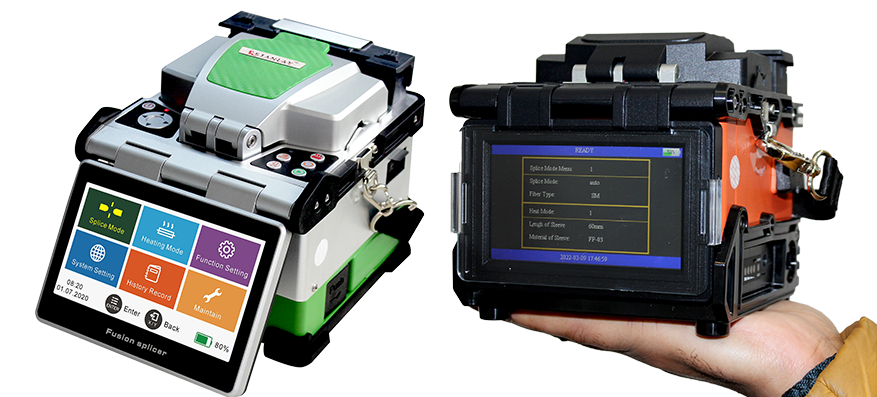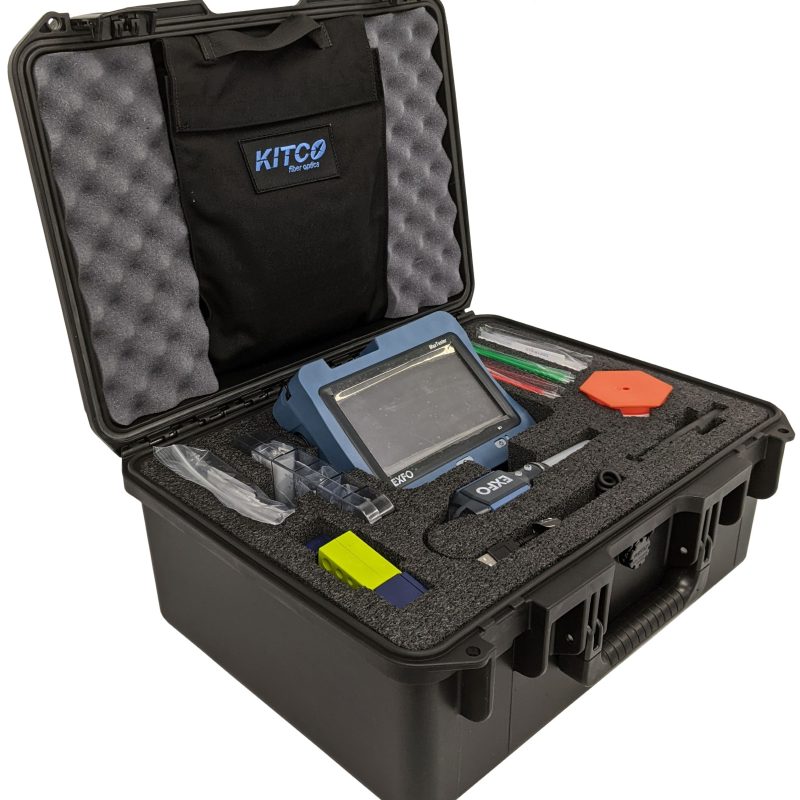Exploring the Influence of Robotic Vision on Modern Manufacturing Techniques and Top Quality Control
Robotic vision innovation is changing the landscape of modern production and quality assurance. By incorporating sophisticated imaging systems and expert system, suppliers can achieve unmatched degrees of accuracy and effectiveness. This change not only maximizes production processes yet also addresses important challenges in preserving item requirements. As industries significantly rely upon these advancements, the implications for future manufacturing methods stay to be completely explored. What will this indicate for the competitive dynamics of the market?
Recognizing Robotic Vision Technology
Robotic vision innovation works as the foundation of automation in contemporary production. It incorporates using cams, sensors, and expert system to make it possible for robotics to analyze and respond to visual info from their atmosphere. This technology permits robots to determine, locate, and examine objects, making them capable of executing complicated jobs such as setting up, evaluation, and product handling with accuracy. The assimilation of artificial intelligence algorithms additionally boosts the ability of robot vision systems, permitting them to adjust to differing problems and enhance with time. By processing pictures and data in real-time, robotic vision systems can assist in faster decision-making and lower errors in manufacturing procedures (robotic vision). This innovation not only improves functional effectiveness but also guarantees that top quality criteria are fulfilled consistently. As the manufacturing landscape proceeds to develop, recognizing the details of robotic vision modern technology becomes crucial for leveraging its prospective fully
Advantages of Robotic Vision in Manufacturing
Robotic vision innovation provides substantial benefits in manufacturing by enhancing precision and precision in jobs such as high quality control and assembly. This enhanced level of information assurances that items meet strict criteria, minimizing waste and rework. Furthermore, the integration of robotic vision can cause raised production performance, permitting suppliers to enhance their procedures and achieve greater output prices.
Improved Precision and Accuracy
In modern-day manufacturing, enhanced precision and accuracy are vital for optimizing manufacturing procedures and guaranteeing product top quality. Robotic vision systems enable makers to carry out complex tasks with remarkable uniformity. These systems utilize innovative imaging modern technologies to discover minute information and variants in materials, parts, and ended up products. By evaluating visual data in real-time, robot vision considerably reduces human mistake, leading to less defects and higher quality requirements. In addition, enhanced precision in dimensions and positioning facilitates better alignment in assembly procedures, which is necessary for intricate designs. Eventually, the integration of robotic vision not just bolsters the dependability of producing outcomes however also cultivates confidence amongst consumers concerning product honesty and performance. This accuracy is vital in markets where top quality is paramount.
Boosted Production Performance

Makers are significantly transforming to vision systems to increase production effectiveness across various processes. These advanced systems enable real-time evaluation and tracking, considerably reducing downtime triggered by mistakes or issues. By incorporating robotic vision, companies can automate quality control, permitting faster identification of issues and lessening the demand for human intervention. This leads to streamlined operations, as robots can swiftly adjust to changes in production needs without giving up accuracy. Vision systems facilitate much better supply administration by accurately tracking parts and items, making certain perfect source utilization. Ultimately, the fostering of robotic vision not just boosts effectiveness yet likewise adds to higher output prices, minimized functional prices, and boosted total efficiency in the production industry.
Enhancing Quality Assurance Processes
Robotic vision technology significantly boosts top quality control processes in manufacturing by using precision assessment methods. These advanced systems help with real-time problem detection, guaranteeing that items satisfy rigid high quality standards. Consequently, suppliers can minimize waste and boost total effectiveness.
Accuracy Assessment Techniques
Accuracy assessment methods have actually changed quality assurance processes in manufacturing, making it possible for the detection of minute problems that typical methods could overlook. These strategies take advantage of progressed imaging technologies, such as high-resolution anonymous video cameras and laser scanning, to accomplish unmatched accuracy. By utilizing robot vision systems, producers can automate examination tasks, making certain regular performance and decreasing human error. The combination of artificial intelligence algorithms additionally enhances these systems, allowing them to adjust and enhance over time. Furthermore, accuracy inspection assists in the recognition of subtle variations in item measurements and surface area finishes, which can greatly affect total product quality. As a result, suppliers can execute corrective activities a lot more swiftly, inevitably resulting in minimized waste and enhanced customer satisfaction.
Real-Time Issue Discovery
Utilizing advanced imaging innovations, real-time issue detection changes high quality control processes in production. By integrating high-resolution electronic cameras and innovative algorithms, producers can promptly identify anomalies throughout manufacturing. This innovation assists in instant corrective actions, reducing waste and boosting overall efficiency. Real-time systems assess items as they move along the production line, ensuring that problems are spotted and addressed without delaying production timetables. Additionally, the application of machine discovering boosts the precision of these systems, allowing them to adapt to brand-new issue patterns gradually. Consequently, producers gain from boosted product quality and decreased functional expenses. Eventually, real-time flaw discovery not only simplifies processes but also cultivates a society of constant renovation in contemporary production environments.
Real-Time Information Analysis and Decision Making
In the dynamic landscape of manufacturing, real-time data evaluation encourages systems to make swift, notified decisions. By leveraging advanced robot vision innovations, producers can collect and refine vast quantities of data instantaneously. These systems evaluate visual inputs to monitor manufacturing procedures, guaranteeing that any variances from high quality requirements are found and resolved without delay. Manufacturers can enhance procedures by reapportioning resources and readjusting workflows based on real-time understandings.
The integration of information analytics permits for anticipating upkeep, where possible devices failings are anticipated prior to they interfere with production. This aggressive method lessens downtime and boosts overall effectiveness. robotic vision. The capacity to make data-driven decisions in genuine time significantly decreases waste and improves product high quality, permitting makers to react to market needs swiftly. Because of this, real-time information evaluation not just simplifies manufacturing but additionally fosters a society of continuous enhancement in modern manufacturing settings
Challenges in Applying Robotic Vision Systems
Executing robotic vision systems in producing presents an array of challenges that can prevent their effectiveness. One considerable challenge is the intricacy of incorporating these systems with existing machinery and workflows. Producers usually encounter compatibility problems with heritage tools, resulting in raised prices and downtime. Additionally, the irregularity in product shapes, sizes, and like this products can make complex the calibration of vision systems, necessitating extensive training and fine-tuning.
One more difficulty depends on refining large quantities of aesthetic information in real time. High-performance computer resources are essential, which may call for more financial investment in infrastructure. Furthermore, there is a lack of proficient employees with the ability of handling and keeping these innovative systems, resulting in prospective operational inefficiencies. Finally, guaranteeing the integrity and precision of robotic vision systems under varying ecological conditions poses a constant obstacle. Addressing these problems is vital for optimizing the potential benefits of robotic vision in manufacturing.
Future Trends in Robotic Vision for Production
As developments in expert system and equipment knowing proceed to develop, the future of robot vision in production shows up significantly promising. Arising patterns show a change towards much more sophisticated imaging innovations, such as 3D vision systems and hyperspectral imaging, which will improve accuracy in quality assurance procedures. Integration with the Web of Things (IoT) will make it possible for real-time data evaluation, allowing robot systems to adapt swiftly to changes in the production environment. Additionally, the advancement of collective robots (cobots) outfitted with sophisticated vision abilities is expected to help with seamless human-robot communications, improving performance and safety and security on the factory floor. In addition, the consolidation of side computer will empower robot vision systems to process information in your area, reducing latency and enabling faster decision-making. These technologies will certainly not only improve manufacturing procedures yet also greatly enhance product high quality, positioning robotic vision as a cornerstone of future commercial procedures.
Often Asked Concerns
How Much Does Robotic Vision Innovation Generally Cost?
Robotic vision modern technology generally sets you back between $10,000 and $100,000, depending upon the intricacy and specifications. Aspects influencing rate include sensor quality, software application capabilities, and assimilation requirements, making it important to evaluate details project needs.
What Industries Are A Lot Of Influenced by Robotic Vision Developments?
Robotic vision weblink innovations significantly influence industries such as manufacturing, auto, electronic devices, and food processing - fibre testing equipment. These sectors take advantage of boosted automation, enhanced quality assurance, and increased performance, causing streamlined operations and minimized labor costs
Can Robotic Vision Solutions Be Integrated With Existing Equipment?
Robotic vision systems can certainly be integrated with existing equipment. This assimilation enhances operational performance, enabling makers to utilize advanced technologies without the requirement for full overhauls, consequently maximizing production procedures and preserving top quality criteria.

What Abilities Are Required to Run Robotic Vision Systems?
Operating robot vision systems demands efficiency in programs, an understanding of equipment knowing, understanding of image handling methods, and the ability to troubleshoot software and hardware concerns, making certain seamless assimilation and perfect performance within making settings.
Are There Any Kind Of Safety Concerns With Robotic Vision in Manufacturing?
